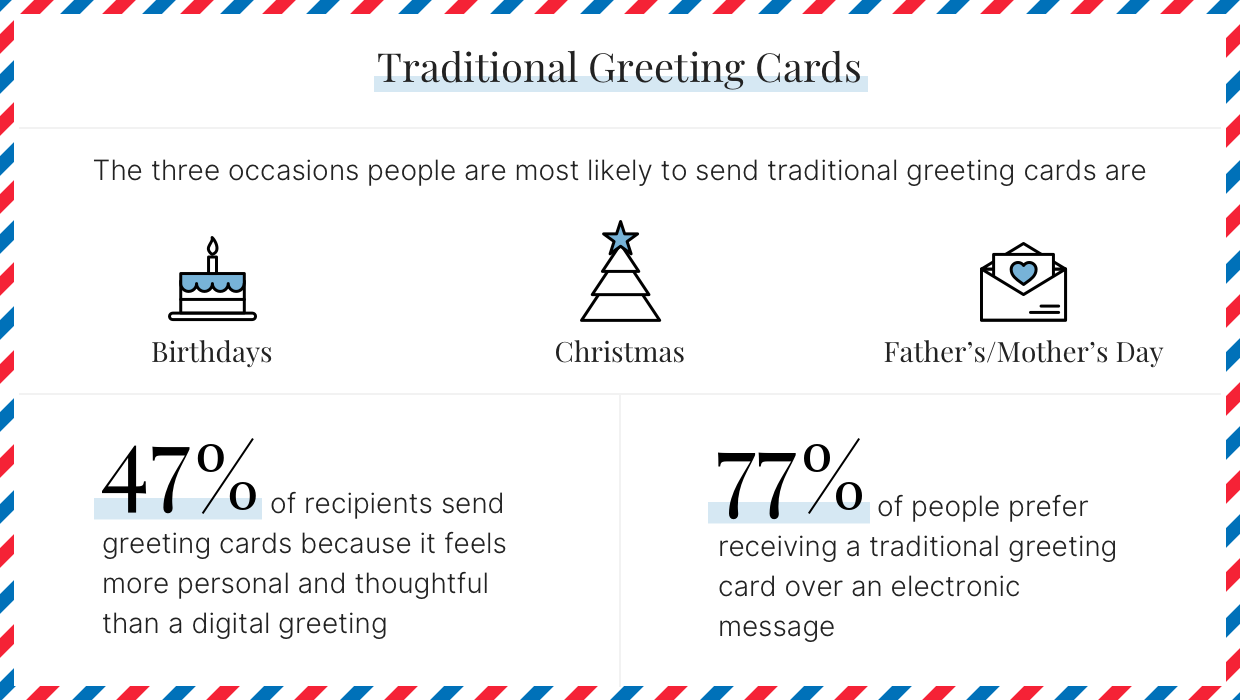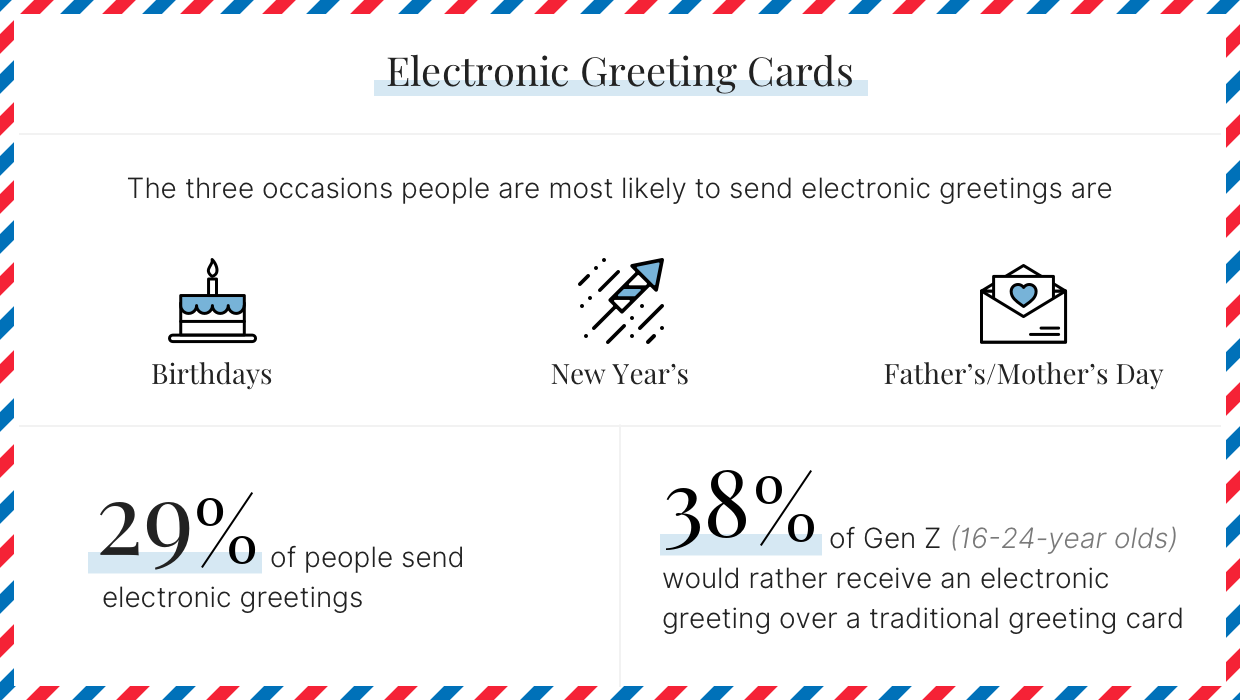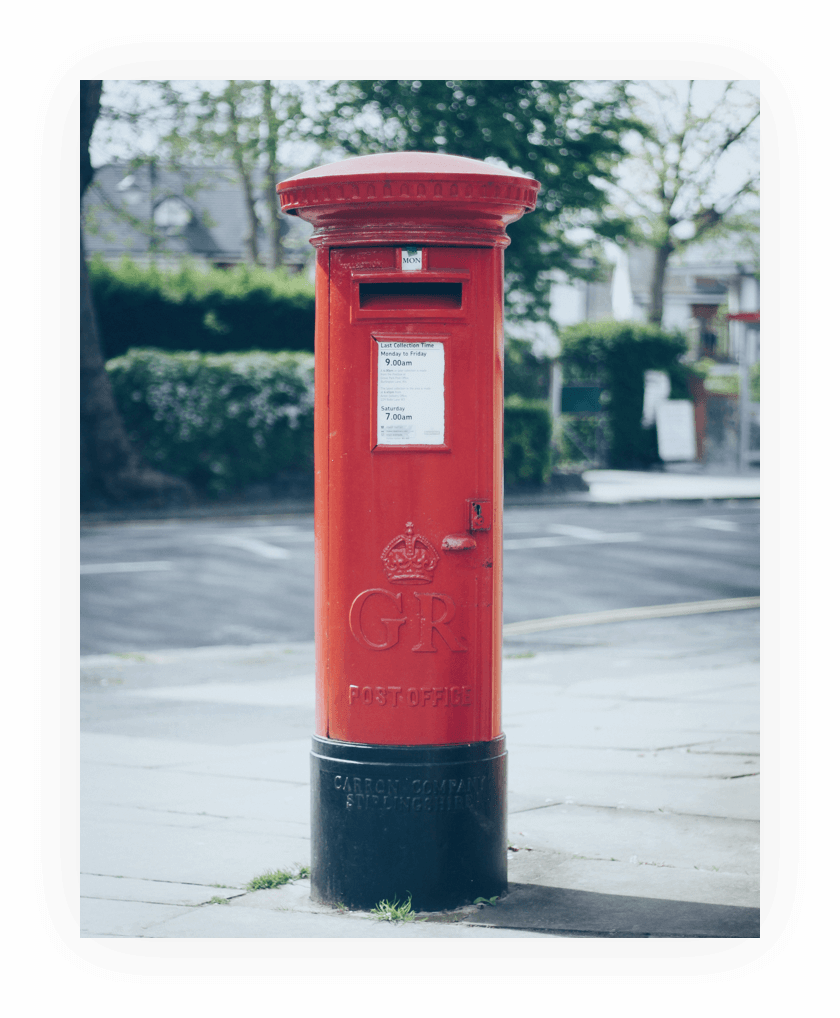





Every aspect of our lives is moving online. But while this connectivity is making our lives easier, does it also mean we’re losing more traditional ways of connecting with each other?
There is one tradition that shows no signs of moving completely online; our habit of sending greetings cards. Why does this ritual persist when so much of our lives are now managed online?
It’s hard to deny there’s something about putting pen to paper that feels more permanent, more meaningful somehow, than an online message. And then there is the sheer physicality of envelopes; of stamps and bubble wrap and cards. Isn’t it more thoughtful to go through the motions of sending a note, a small gift or a letter, than simply whizzing over a quick text with a dozen emojis? Or is this notion as destined to die out as the telegram or fax?
To find out just what has – thus far – given longevity to the handwritten, hand-posted message, we conducted a survey about the UK’s attitudes to greeting cards. We also spoke to Philip Seargeant, an applied linguist and author at the Open University, about why he believes greeting cards won’t be falling out of fashion any time soon.









The value we attribute to different forms of communication has changed. It’s not uncommon to reply to a message only in emojis or receive a humorous gif in place of something written. This means our everyday methods of communicating have changed, and just as language does, will continue to evolve.
“These days, electronic communication has replaced handwritten communication for a great number of situations, particularly those where speed, reach, cost and flexibility are primary issues. In a word, electronic communication is simply more convenient. Not only is it cheaper and instantaneous, but you’re also able to communicate with several people all at once, and it allows for the use of things such as emojis, photos, memes and videos which can enhance a message.
Having said that, there are certain qualities that handwritten communication possesses that can’t properly be replicated by electronic communication. Handwritten communication can feel more personal, more considered, and more permanent. And when people do still send handwritten communication, it’s when these qualities are more important to them for the particular situation at hand.”

On an everyday basis, we tend to be moving towards the easiest form of communication. But when it comes to marking a special occasion, most of us still see the value in taking time to write something more tangible. In fact, almost half (47%) of our survey respondents said they send greeting cards because it feels more personal and thoughtful than a digital message.
“In terms of the popularity of greetings cards, part of their meaning now is simply the fact that they’re not electronic. Given how ubiquitous social media is, a physical card with a handwritten message has a sense of being more special.
Greetings cards have something of a ritual function in society. They’re part of wider practices around celebration or the marking of significant events. In this respect, the act of simply sending them carries a particular message. It tells the receiver you’re thinking of them in times of celebration or difficulty. The fact that they have permanence and a physical quality to them is also important. They can be displayed, and they have decorative value. They can also be kept as mementoes. Despite the fact that we’re living more and more of our lives online, physically interacting with people and meeting face-to-face is still a vitally important part of our lives, and greetings cards can be part of this more embodied aspect of communicating with each other.”

While the ease of sending an electronic message can be tempting, only 7% of those surveyed said they always send them instead of a traditional card. There are a huge number of services available that are designed to marry the online/offline process of sending greeting cards, though – which may go some way towards bridging the gap. The likes of Moonpig and thortful make it easy to order a card online, giving you the opportunity to personalise the card with a photo and a personal message. The question is – how personal can a printed message really be? It could be argued that part of the pleasure of getting a greeting card comes from the fact someone’s taken time to handwrite their note to you.
“The ability to personalise cards is certainly a plus point – so, for example, primary school classes using pupils’ drawings for the design of Christmas cards. This is a good blend of traditional and digital technology. But while online services allow for this type of personalisation (adding photos etc), they don’t necessarily function so well in terms of the elements I’ve outlined above (if, for instance, they’re sent directly to the recipient, so you don’t have the chance to write in them yourselves).
There’s also the way that greetings cards can be related to particular places or events, acting almost as a kind of souvenir. In this way they can have a sort of localised value – you buy them in a particular place, and the memory of that place becomes part of the value you associate with the card. These are all further ways in which the card – and the act of buying, writing, and possibly delivering it – can become part of the process of interacting with someone.”






Will the tradition of handwritten greeting cards still be around in fifty years’ time? With 77% of people surveyed saying that they enjoy receiving them, it seems likely that they will. In keeping with this point, Philip astutely suggests that just because we’re becoming a more technologically advanced society, it doesn’t mean our values will change overnight.
“My expectation would be that the popularity of greetings cards in particular contexts will continue. How technology develops, and what sort of communications technology we’re likely to be using in ten to fifteen years’ time. Given the rapid pace of technological change, we could well be communicating in ways we can’t imagine at the moment, and this may change the equation once again. The mix of the ritual importance of cards, plus the sense of personal value attached to them seems likely to continue.”

Philip Seargeant is an applied linguist currently working at the Open University. He is the author of several books on topics ranging from social media communication to linguistic creativity to English around the world.
